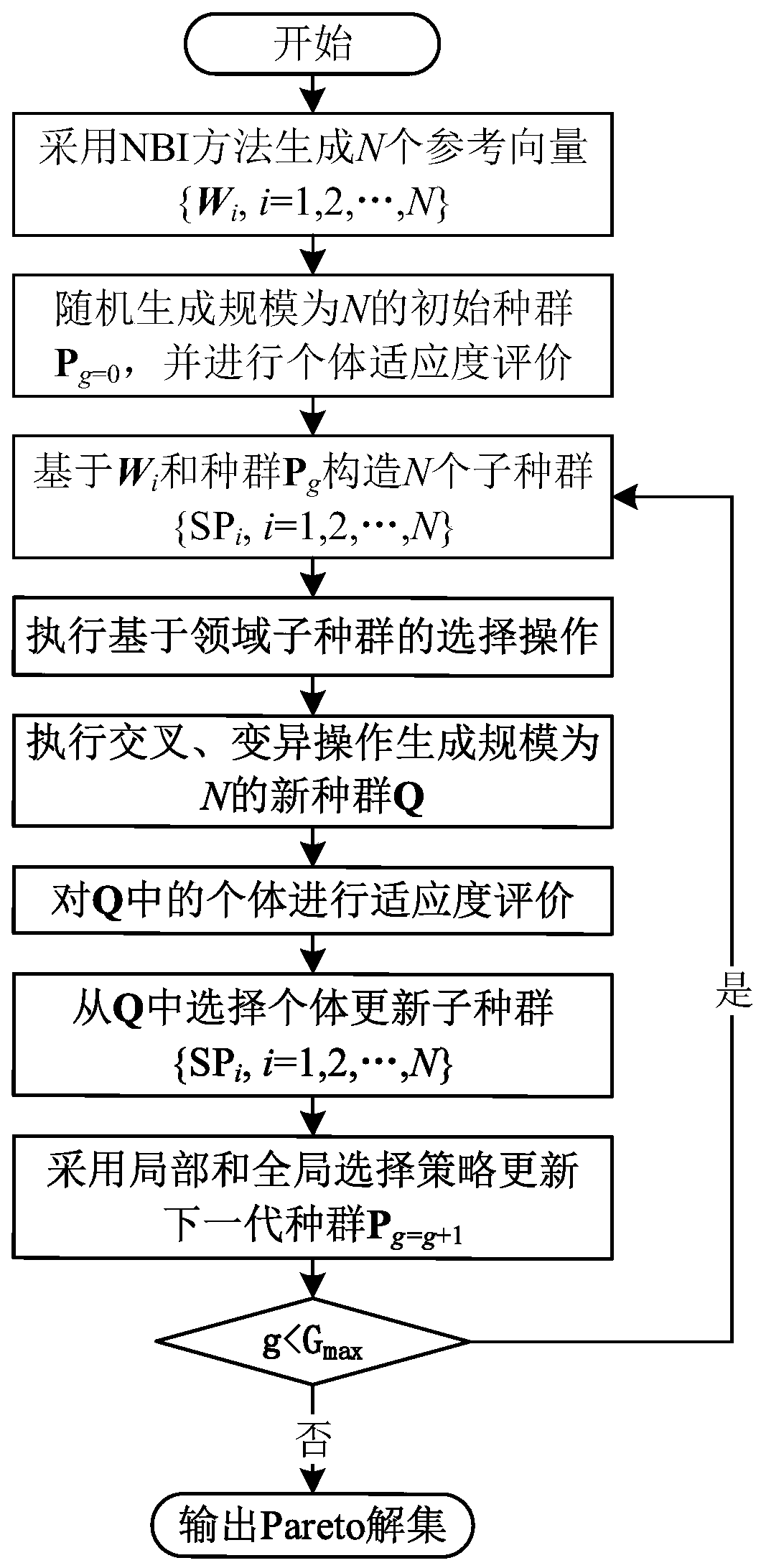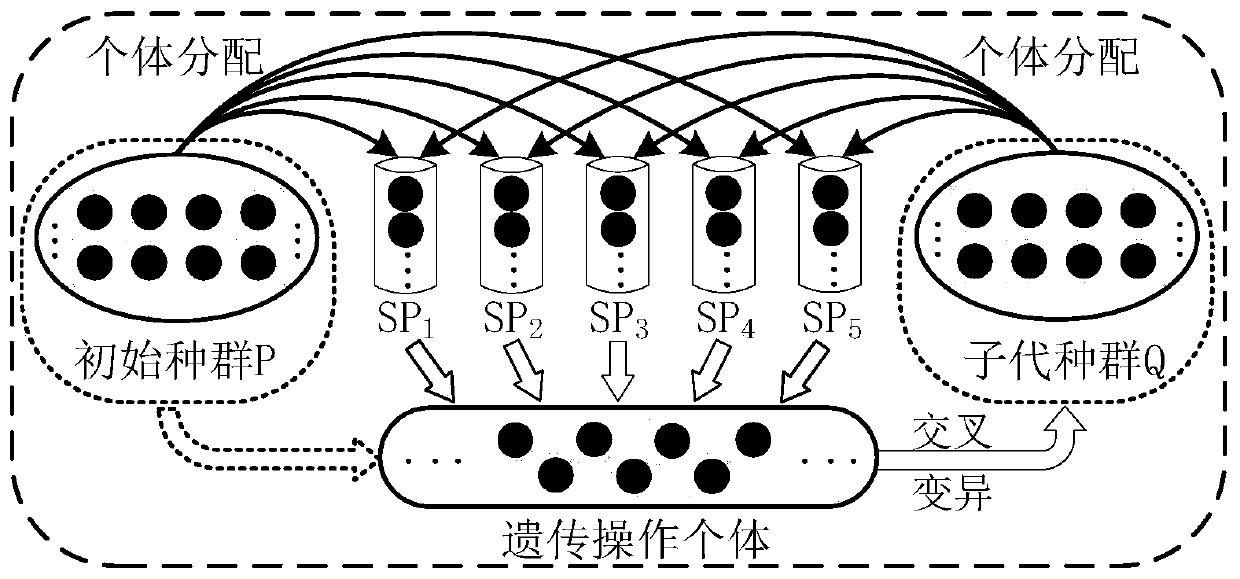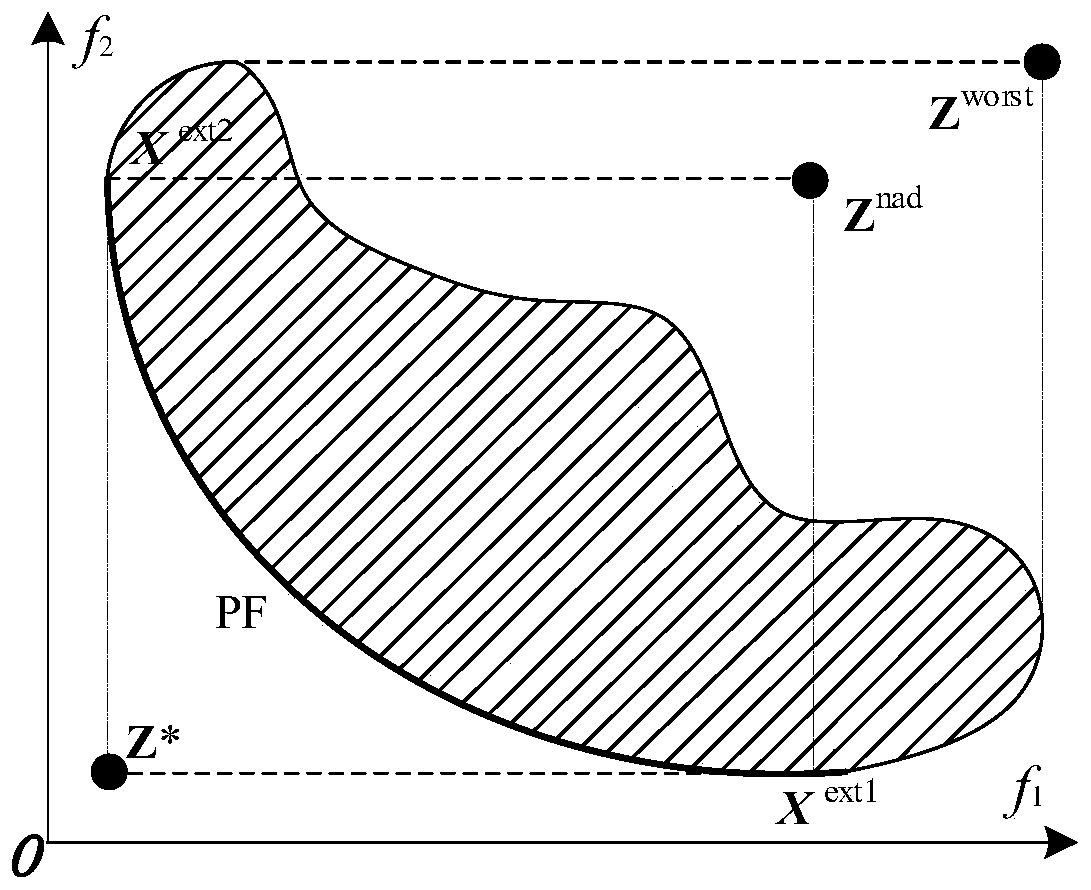Decomposition-based high-dimensional multi-objective evolution method
A multi-objective evolutionary, high-dimensional technology, applied in the field of intelligent optimization algorithms, can solve problems such as difficult convergence and diversity
- Summary
- Abstract
- Description
- Claims
- Application Information
AI Technical Summary
Problems solved by technology
Method used
Image
Examples
Embodiment 1
[0093] Embodiment 1: as Figure 1-10 As shown, a decomposition-based high-dimensional multi-objective evolutionary algorithm includes steps 1-8.
[0094] Step 1, parameter setting: algebra g=0, maximum number of iterations G max , the target number M≥4, and the population size N.
[0095] Step 2, generate N reference vectors W={W 1 ,W 2 ,...,W N}:
[0096] Step 2.1, using the Normal Boundary Intersection (PBI) method to generate uniformly distributed reference points RP on a unit hyperplane L = {RP 1 ,RP 2 ,...,RP N};
[0097] Step 2.2, based on the reference point RP 1 ,RP 2 ,...,RP N Construct a uniformly distributed reference vector W in the target space 1 ,W 2 ,...,W N . A reference vector satisfies the following conditions:
[0098]
[0099] in Indicates the reference vector W i The component values of the j-th dimension of and H means that each target is divided into H equal parts, and the number of generated reference vectors is N, where Such...
PUM
 Login to View More
Login to View More Abstract
Description
Claims
Application Information
 Login to View More
Login to View More - R&D
- Intellectual Property
- Life Sciences
- Materials
- Tech Scout
- Unparalleled Data Quality
- Higher Quality Content
- 60% Fewer Hallucinations
Browse by: Latest US Patents, China's latest patents, Technical Efficacy Thesaurus, Application Domain, Technology Topic, Popular Technical Reports.
© 2025 PatSnap. All rights reserved.Legal|Privacy policy|Modern Slavery Act Transparency Statement|Sitemap|About US| Contact US: help@patsnap.com



